by Mike Telin
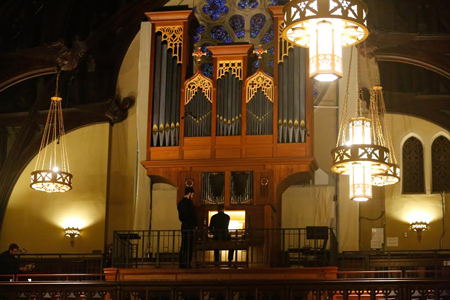
Over ten days in March, the Cleveland Chamber Symphony presented its fourth annual NEOSonicFest, featuring outstanding performances by artists, ensembles, and organizations from Cleveland’s vibrant new music scene. The Festival included works by pioneers in the field — such as Olivier Messiaen, György Ligeti, and Donald Erb — as well as composers who are at the middle stages of their careers. The highlight was a concert dedicated to music by young composers from area conservatories and schools of music. I attended five of the Festival’s six performances.
NEOSonicFest opened on Friday, March 17 at Church of the Covenant with a recital by the brilliant organist Jonathan Moyer. Taking profit of the church’s two distinct styles of instruments, his program was a feast for the ears from start to finish. For the 17th-century-style Newbury organ, located in the gallery, Moyer chose Arvo Pärt’s Mein Weg hat Gipfel und Wellentäler (“My Way Has Summits and Valleys”) and Franz Danksagmüller’s Circuli, along with his own Merry Fugue. But it was Moyer’s riveting performance of György Ligeti’s haunting Volumina that left you as breathless as the instrument itself.

On Wednesday, March 22 at Baldwin Wallace’s Gamble Auditorium, the Cleveland Chamber Symphony, under the direction of Steven Smith, presented its annual Young and Emerging Composers concert. This year the program provided seven young composers with the opportunity to have their works performed by a professional orchestra.
Robert Justin Frankeny’s (Baldwin Wallace) Conniption No. 1 is a playful work of tossed-off motives, sustained pitches, and fanfare-like interjections by the winds and brass.
For his Single Seed, Justin Weiss (Oberlin) creates long, harmonically lyrical lines that gradually transform into lush, colorful sound clouds — just as a seed becomes a beautiful flower.
Alex Morris (University of Akron) told the audience that the Dream Catcher is the spirit that collects nightmares and passes them onto the sleeper. Morris’s seductive writing captures that image wonderfully.
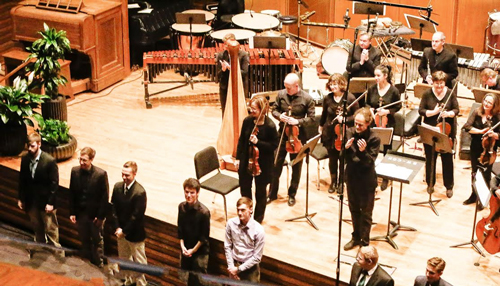
Gabriel Novak (Cleveland Institute of Music) brought his jazz background to the absorbing Listen to ‘em. Based on a lullaby, the work is full of beautiful textures and inventive transitions.
Daniel Bayot’s (Bowling Green State University) three-movement Monoamines is all about mood disorders. “Deficient (DA)” is full of multiphonics, while “Ruminations (5-HT)” cries out with rhythmic drive. The concluding “Excess (NE)” begins with repeated dance rhythms and ends by fading away to nothingness.
Sean Parks’ (Cleveland State University) Impulse thrives on long, rhythmic phrases interrupted by lyrical motives. The work was the perfect conclusion to the evening.
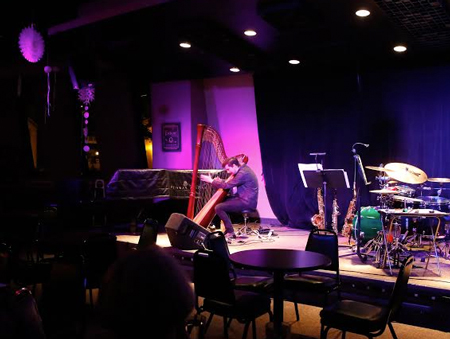
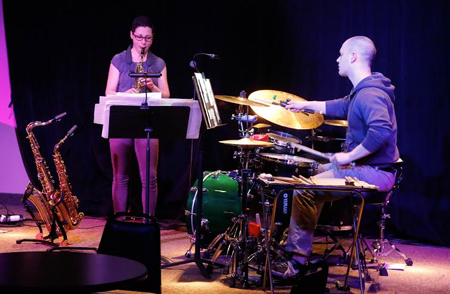
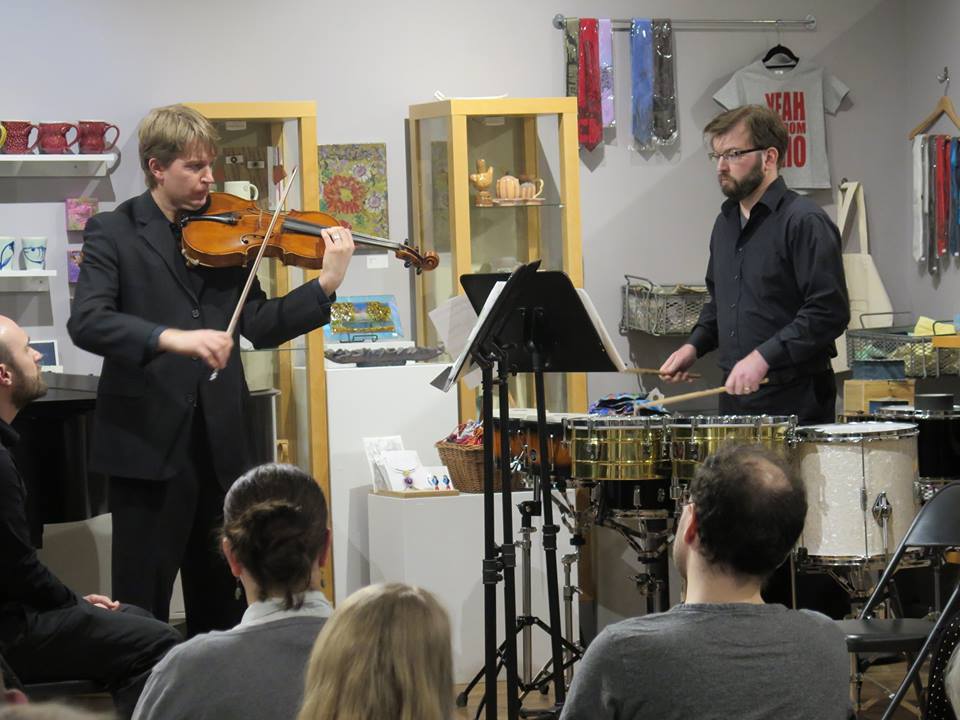
Gunnar Owen Hirthe brought an abundance of life to the world premiere performance of Michael Rene Torres’s Voices of Contempt for solo clarinet. Traveling from the lowest to the highest range of the instrument, Hirthe played with nimble technique. The sometimes angry-sounding work ends with a final screech before fading into silence.
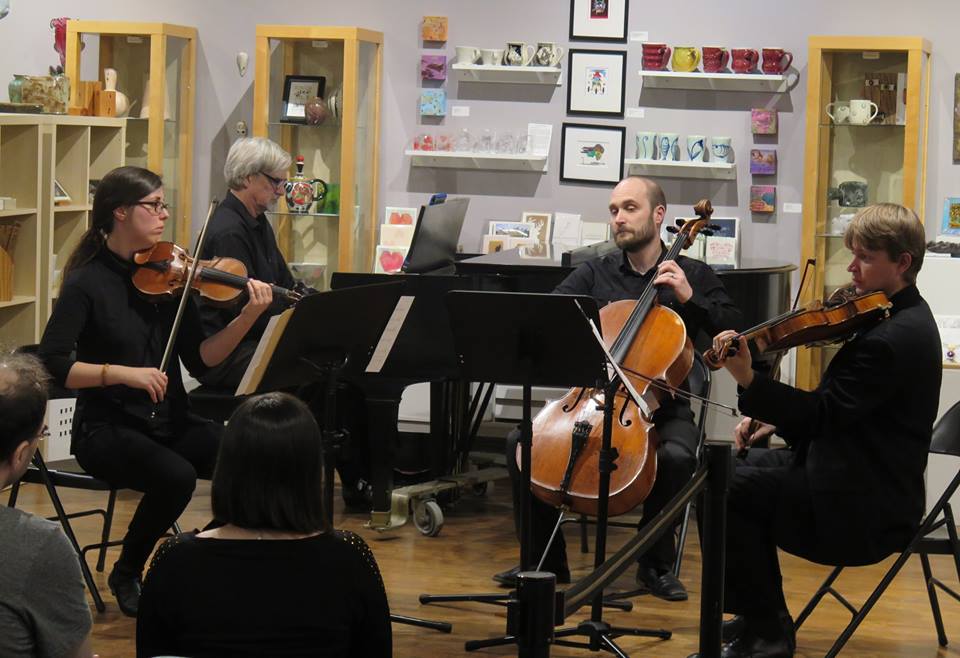
The evening also featured an outstanding performance of Bohuslav Martinů’s Duo No. 2 for Violin and Cello by Tweed and Diodore, while alto flutist Sean Gabriel found all the wit and whimsy in Donald Erb’s Music for Mother Bear.
The 2017 edition of NEOSonicFest concluded with a concert by the Cleveland Chamber Symphony on Sunday, March 26 at 4:00 pm in Harkness Chapel. Steven Smith led the ensemble in the 50th-anniversary performance of Donald Erb’s Reconnaissance along with a repeat performance of Music for Mother Bear.
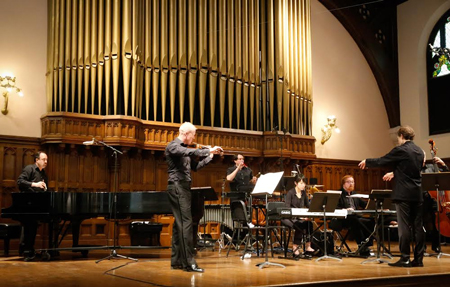
Written in 1965, it’s difficult to imagine that Reconnaissance was considered groundbreaking when it received its premiere in 1967 at a Music of Our Time concert in New York — by today’s esthetics it’s not ear-shocking. Scored for violin, bass, two synthesizers, piano, and a range of percussion instruments, the piece requires the players to employ a variety of extended techniques throughout. Erb creates an imaginative cacophony of sounds and impressively uses each of the six voices as equal partners — the electronics and the acoustic instruments are fully integrated.
Which of the two versions works best? The added movement, which served as the fourth of the five during the first hearing, sounds out of place, interrupting Erb’s skillfully crafted musical arc. When it was removed for the second hearing, his tidy craftsmanship came through in a delightful way, creating a seamless flow from one movement to the next. It’s a shame that Reconnaissance has only had one other performance since its premiere because it is not a piece for the museum, in fact, it’s quite beautiful.
Published on ClevelandClassical.com April 10, 2017.
Click here for a printable copy of this article.



